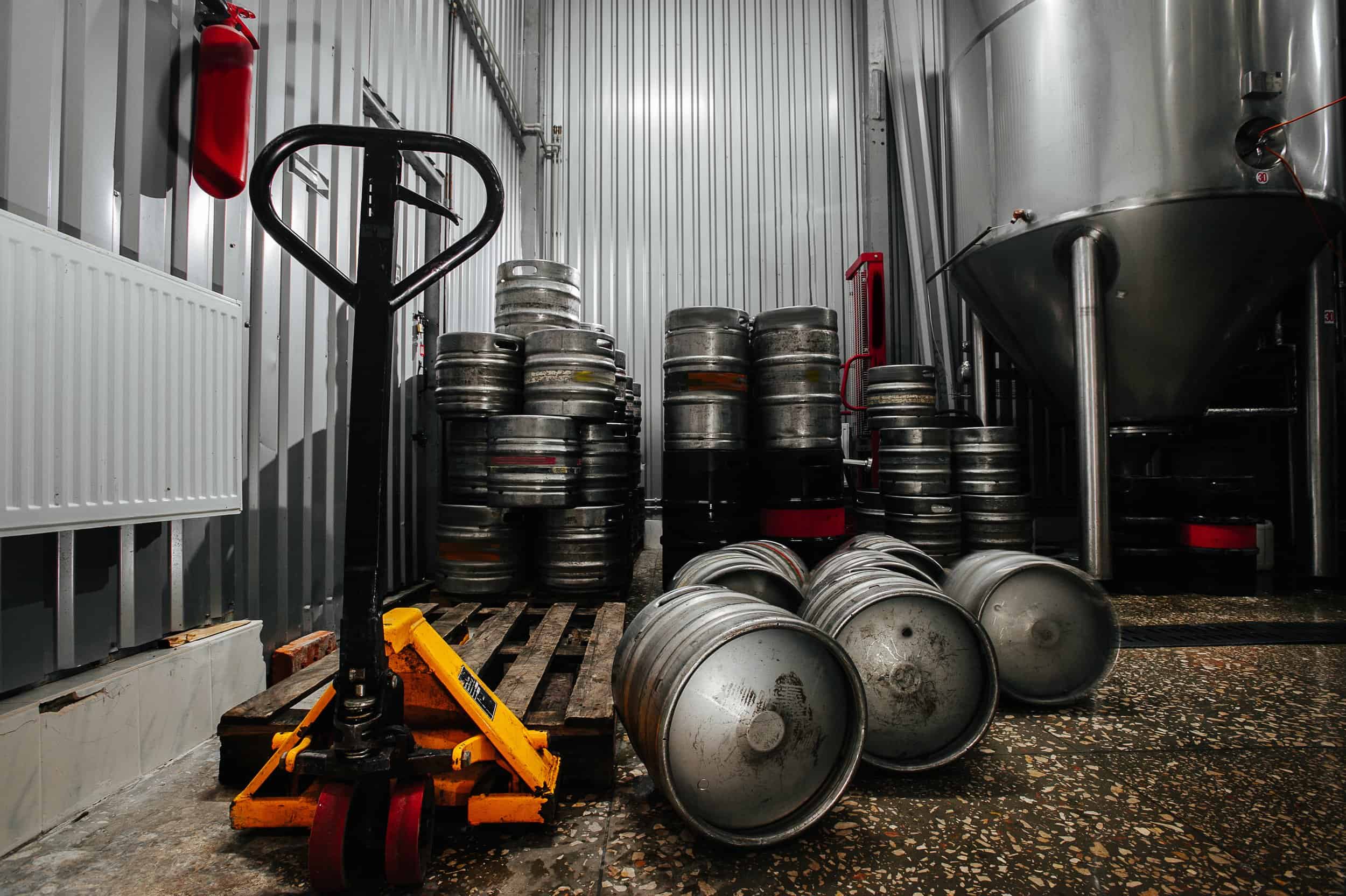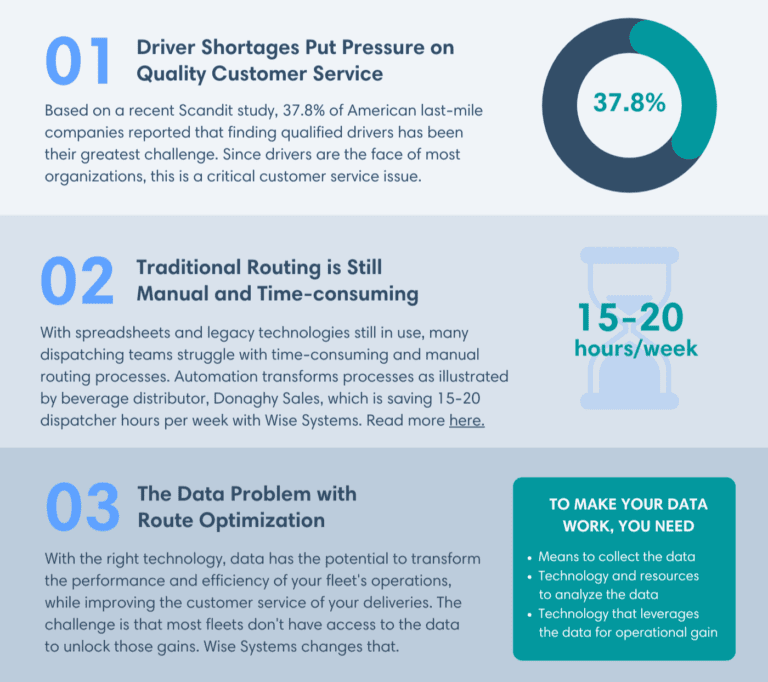
3 Last-Mile Pain Points in the Food & Beverage Industry

Wise Systems
3 Last-Mile Pain Points in the Food & Beverage Industry

Wise Systems

It would be easy to point to just about any industry and say it suffers from outdated processes, a pressing need for digital transformation, as well as the ongoing effects of the COVID-19 pandemic on both employees, customers, and predictable order volumes across supply chains. After talking to clients in the food and beverage industry, I’ve noticed several challenges come up over and over:

1. Driver Shortages Put Pressure on Quality Customer Service
Food and beverage companies in the last mile rely on their drivers to do more than just deliver goods. Drivers are the faces of their organizations, providing customer service and representing the company in the day-to-day. So it follows that, in order to keep your customers happy, you need to keep your drivers happy. But the pressure to do that has increased as driver shortages also increase.
Keeping your drivers happy goes far beyond compensation and hours. It also includes recognizing the importance of their role in your organization and giving them a ‘voice’. Drivers are the biggest source of on-the-ground, tribal knowledge about what’s going on in the field and with your customers. The vital information they have is hard to get out of a driver’s head and into a system of record, but it’s not because people don’t try to do it every day. One Wise Systems client told me that, before using Wise Systems, he tried to gather intel from his drivers with a spreadsheet. At the end of every day, he would chase drivers down trying to get them to fill this spreadsheet out. It didn’t work.
This is one example of where cloud and mobile technology can help. Providing drivers with tools that meet them where they live – in the app that lives in the palm of their hands instead of on a spreadsheet that someone else owns. Then take that driver app and make it work for your team, ensuring that there are features like notes, barcode scanning, inventory management, parking pins, and more. If your drivers are less focused on managing a paper trail, they can focus more on providing excellent service to your customers.
2. Traditional Routing is Still Manual and Time-consuming
Dispatchers are constantly balancing delivery constraints with adhering to customer demands. Routing and dispatching teams need to make operational changes to maximize what they have – whether that be drivers, trucks, or hours in a day. And doing this manually is meticulous, time-consuming work. One of the biggest things I hear from our clients is how a single change – like a customer wanting to modify their delivery time window – can throw off their entire plan and take hours to accommodate. Even when it seems like there’s a straightforward solution, there’s often a chain reaction of necessary edits to the rest of the route plan, requiring hours of manual effort.
This is a key part of your last-mile routing process where digital platforms can transform your operations and bottom line. When our client, Donaghy Sales, implemented Wise Systems, their dispatchers saved 15-20 hours per week. What was taking their team half of a workweek to resolve, an algorithm can tackle in minutes. What would you do with an extra 20 hours in your week?
3. The Data Problem with Route Optimization
Many fleets using traditional routing and dispatching software are attracted to the idea of having and using data. But the challenge begins with gathering data. Companies have route-specific or aggregated fleet mileage and driver hours but lack easy access to the data that matters, like service time. Next-generation platforms like Wise Systems provide that critical data. And that data has the potential to transform your operational performance, improving on-time deliveries and customer service. To make your data work for your business you need three things:
- A means to collect the data
- The resources to analyze the data
- The business context to put the data to good use
Implementing route optimization software is no small feat, and jumping into a newly digitized, fully dynamic solution may not be the right fit for your organization. It’s important to find a solution that can accommodate your needs – whether that be a static, dynamic, or hybrid static/dynamic solution – and still drives results. Here’s a good place to start.
Wise Systems can help you aggregate and leverage data, regardless of the routing solution you choose. Our routing and dispatch software has freed up customers to leverage that data into real business tactics, helping to pull the food & beverage industry into the digital age. We can help you give a voice to your drivers and leverage their on-the-ground knowledge for better customer insights. These are the top 3 challenges I’m hearing about, and Wise Systems can help you address these and more. Get in touch with my team to learn more.





